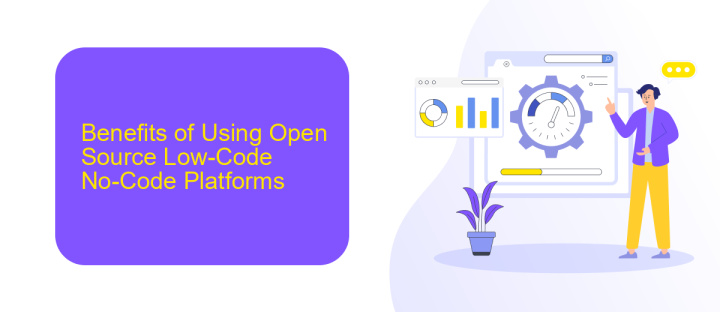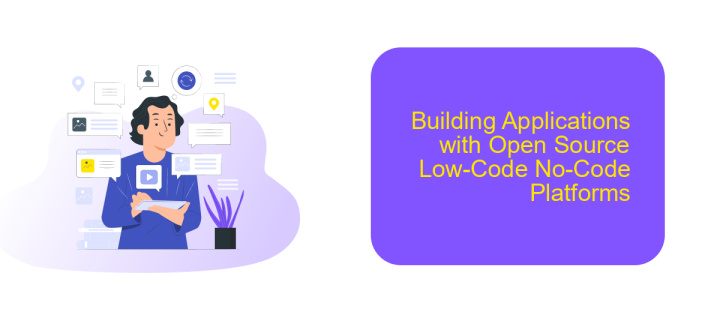Low-Code No-Code Platforms Open Source
Low-code and no-code platforms have revolutionized software development by enabling users to create applications with minimal coding knowledge. Open-source variants of these platforms offer even greater flexibility and customization, empowering developers and businesses to tailor solutions to their specific needs. This article explores the benefits, challenges, and potential of open-source low-code and no-code platforms in the modern tech landscape.
Introduction to Low-Code No-Code Platforms
Low-Code No-Code platforms are revolutionizing the way software is developed by enabling users to create applications with minimal or no coding knowledge. These platforms provide intuitive drag-and-drop interfaces, pre-built templates, and various tools that simplify the development process, making it accessible to a broader audience.
- Drag-and-drop interfaces
- Pre-built templates
- Integration with various services
- Automated workflows
One of the key benefits of these platforms is their ability to integrate seamlessly with other services and applications. For instance, ApiX-Drive allows users to connect various apps and automate workflows without writing a single line of code. This not only saves time but also reduces the risk of errors, making it easier for businesses to streamline their operations.
Benefits of Using Open Source Low-Code No-Code Platforms

Open source low-code no-code platforms offer a significant advantage in terms of cost-efficiency. Unlike proprietary solutions, they eliminate licensing fees, making them accessible for startups and small businesses. Moreover, these platforms provide greater flexibility and customization options, enabling developers to tailor applications to specific business needs without being constrained by vendor limitations. The transparency of open source code also enhances security, as it allows for thorough inspection and prompt identification of vulnerabilities.
Another key benefit is the ease of integration with other tools and services. For instance, platforms like ApiX-Drive streamline the process of connecting various applications and automating workflows, saving valuable time and resources. This integration capability is crucial for businesses looking to enhance operational efficiency and data consistency across different systems. Additionally, the active open source community continuously contributes to the improvement and innovation of these platforms, ensuring they remain up-to-date with the latest technological advancements.
Top Open Source Low-Code No-Code Platforms

In the rapidly evolving world of software development, open-source low-code and no-code platforms have emerged as powerful tools for accelerating application development. These platforms enable both developers and non-developers to create applications with minimal coding effort, fostering innovation and efficiency.
- Budibase: An open-source platform that allows you to build internal tools quickly. It supports integrations with various databases and APIs.
- Appsmith: This platform provides a user-friendly interface for building internal applications. It supports a wide range of integrations and offers extensive customization.
- Joget: Joget combines low-code capabilities with workflow management, making it ideal for enterprise applications. It supports various database systems and API integrations.
- Node-RED: A flow-based development tool for visual programming. It is particularly useful for IoT applications and supports numerous integrations through its extensive library of nodes.
These platforms not only streamline the development process but also offer robust integration capabilities. For instance, services like ApiX-Drive can further enhance these platforms by enabling seamless API integrations, allowing users to connect various applications and automate workflows effortlessly.
Building Applications with Open Source Low-Code No-Code Platforms

Building applications with open source low-code/no-code platforms has become increasingly popular due to their flexibility and cost-effectiveness. These platforms empower users to create functional applications without extensive coding knowledge, democratizing software development and enabling rapid prototyping and deployment.
One of the main advantages of using open source low-code/no-code platforms is the ability to customize and extend functionalities to meet specific needs. Users can leverage community-contributed modules and plugins to enhance their applications. Additionally, these platforms often come with robust documentation and active user communities, providing ample support and resources.
- Ease of use and accessibility for non-developers
- Cost savings on development and maintenance
- Flexibility to customize and extend functionalities
- Access to a wide range of community-contributed modules
- Strong support and resources from active user communities
Integrating various services and APIs is crucial for building comprehensive applications. Tools like ApiX-Drive simplify this process by offering seamless integration capabilities, allowing users to connect their applications with external services effortlessly. By leveraging such tools, developers can enhance the functionality of their applications, ensuring they meet diverse business needs.
Case Studies and Success Stories
One notable case study involves a mid-sized e-commerce company that leveraged a low-code platform to streamline its operations. The company initially faced challenges with manual order processing and inventory management, which led to errors and delays. By implementing a low-code solution, they were able to automate these processes, significantly reducing errors and improving efficiency. This transformation not only saved time but also enhanced customer satisfaction, as orders were processed more quickly and accurately.
Another success story is from a healthcare provider that used a no-code platform to develop a patient management system. Previously, they struggled with outdated software that was difficult to update and maintain. With the no-code platform, they quickly built a custom application that integrated seamlessly with their existing systems. Utilizing tools like ApiX-Drive, they managed to set up smooth integrations with third-party services, ensuring data consistency and reliability. This innovation led to better patient care and more efficient administrative processes.
FAQ
What is a Low-Code/No-Code platform?
What are the benefits of using open-source Low-Code/No-Code platforms?
Can Low-Code/No-Code platforms handle complex business processes?
How can I integrate third-party services with a Low-Code/No-Code platform?
Are Low-Code/No-Code platforms secure?
Strive to take your business to the next level, achieve your goals faster and more efficiently? Apix-Drive is your reliable assistant for these tasks. An online service and application connector will help you automate key business processes and get rid of the routine. You and your employees will free up time for important core tasks. Try Apix-Drive features for free to see the effectiveness of the online connector for yourself.

